 Photo ©
Keith Williams
Photo ©
Keith Williams
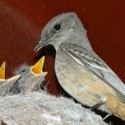
The future of NestWatch is in your hands!
So far this year, 1,500 NestWatchers have contributed observations describing more than 10,000 nesting attempts. This information adds yet another chapter to the story of North American nesting birds. Each and every observation submitted enables us to better understand the current health of bird populations, changes that occur over time in their reproductive biology, and what’s causing these changes. Scientists are depending on NestWatch data for their research. There are currently nine ongoing research projects that are incorporating NestWatch data collected by citizen scientists like you.
While we are elated to receive data contributions from more than 1,500 NestWatchers each year, about 23,000 people receive this eNewsletter. We need you, too! Finding and monitoring bird nests certainly is not easy, and understandably isn’t a task suited for everyone. If you couldn’t find any nests to monitor this year, or if you simply enjoy reading the articles in our eNews and information on our website, there is another way that you can make a difference. If each of you contributes just $10 to help support NestWatch, we would be able to fund the program for years to come. The Cornell Lab of Ornithology is a nonprofit organization and NestWatch is dependent on the generosity of people like you. Last year, your financial contributions helped support NestWatch participant training programs across the country. For these trainings to continue, we need your help. Donations of any amount would be greatly appreciated; however, contributions of $25 or greater will receive a NestWatch poster.
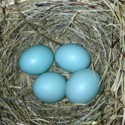
Rare Bluebird Twins Spark Interest
Earlier this month, we received a report of an anomaly in an Eastern Bluebird nest in State College, Pennsylvania. The nest contained three normal-sized eggs and one large egg. The large egg contained two fertilized embryos, or twins! The four eggs hatched on July 1, resulting in five nestlings. The twins did not grow as quickly as their three siblings and were always noticeably smaller. Unfortunately, these 2 smaller nestlings died after 11 days, perhaps because the adult male bluebird went missing at some point. The female likely had a hard time feeding all five babies on her own, and the two smaller nestlings may not have been able to obtain as much food as their larger siblings. The three surviving nestlings are doing well at the time of this writing.
Twinning has been observed in other species of wild birds, including American Goldfinch, Peregrine Falcon, Gadwall, Mallard, and Song Sparrow, as well as in domestic chickens. Opportunities to observe this rare occurrence outside of a laboratory are scarce because double-embryo eggs are rare to begin with–fewer than half of one percent of waterfowl eggs in one study contained twins. It is even rarer for both chicks to survive hatching. Typically, before hatching, one embryo may out-compete the other, or both embryos may die due to insufficient oxygen and/or space. A large study of 208 double-yolked chicken eggs only resulted in 1 egg that hatched into twin chicks. Twin chicks apparently have a very difficult time pipping the eggshell.
Twins can form from eggs with double yolks (i.e., fraternal twins), or from eggs with one yolk and two embryos (i.e., identical twins). We don’t know which was the case for these bluebird twins, but we do know that for them to have hatched and lived for 11 days is a very rare phenomenon, indeed! We thank Gerald Clark, owner of the nest box in question, and NestWatcher Harry Schmeider for bringing this to our attention so that we can all learn from this unique experience. For further reading about twinning in wild birds, see ornithologist Laura Erickson’s blog post, Twins and Double Yolks in Bird Eggs.
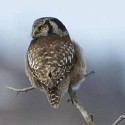
Free Access to Birds of North America Online ending August 1!
Just a reminder that you will continue to have free access to the Birds of North America Online through the end of July. We hope you’ve had the opportunity to take a look at this resource, the most up-to-date scientific information available for all species of North American breeding birds. Free access will continue to be from the BNA Online Proxy Server. Once there, select “Other Organizations” and then select “NestWatch” from the dropdown menu of organizations on the next screen. Then enter the following User Name and Password:
User Name: NestWatch
Password: Bluebird
After clicking submit, you will immediately be taken to the BNA Online Home Page
Should you wish to maintain access to BNA Online through a regular subscription, NestWatch participants are eligible for significantly discounted subscription rates. The discounts listed below are a savings of 20% or more off the regular rates for one, two, and three-year subscriptions.
1 year: $30 USD
2 years: $60 USD
3 years: $80 USD
If you’d like to take advantage of these special rates for NestWatch participants, please go to the Cornell Lab of Ornithology E-Store. Choose how long you wish to subscribe and enter “BNANW” in the Promotion Code area of your cart and click “Apply,” then continue the checkout process. You’ll get an email receipt and a second email with a code to activate your subscription. If you have any questions about BNA Online or this offer, please contact Barry at bab78@cornell.edu.
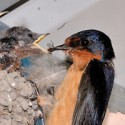
NestWatchers Continue to Set New Records
Congratulations, NestWatchers! You’ve just broken the records for four more species: Eastern Phoebe, American Robin, Mourning Dove, and Barn Swallow! Together with the House Finch and Northern Cardinal (last month’s record-breakers), that makes six species with all-time high numbers in our database. The more data you submit, the better we can track breeding success across a variety of species and locations, so we encourage you to submit your 2013 data now. Even if you found just one nest, we hope you’ll report it to NestWatch.org. Who knows, you could be the only person in your county to contribute a record for that species!
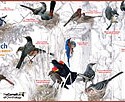
Monthly Winner
At the beginning of each month, NestWatch randomly selects one participant who has entered data that month to receive a copy of the NestWatch Common Nesting Birds of North America poster. This month’s lucky winner is Jill Constantine. Congratulations, Jill!